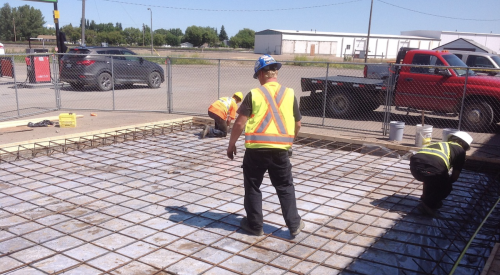Just like a home, the builders and subcontractors can work as a seamless system rather than a collection of workers with separate tasks. To steer your team toward systems thinking, here's how you might start:
Get your team of contractors together at project start for a workshop. Talk about your project goals, be they energy efficiency, using recycled materials or minimizing construction waste. General contractors should encourage subs to find creative solutions to challenges that arise. Without encouragement and a clear signal of your commitment, they'll hear it as lip service and continue with business as usual. Aim for a cultural shift.
Create communication mechanisms as needed. A job board can be effective if the construction supervisor enforces its use.
Look for mutually beneficial solutions. You want something that saves energy but also provides durability and affordability. Focus on strategies that will let you do that, such as advanced framing.
If you want to see it happen, make sure it's in the design and that the design is clear. If your designer plans on a 2-foot module, make sure the whole team knows it. Plan the main runs for ducts, plumbing and electrical to minimize penetrations and air infiltration. Try to keep them in one wall or as few walls as possible.
Revisit your goals frequently throughout the project and provide oversight to ensure that contractors follow your design. If the mechanical contractor doesn't follow the plan, he might take the space you had planned for plumbing lines, and suddenly your network will go everywhere. Your construction supervisor not only must be solidly behind your project goals, but he also must understand how to execute every step of the way to ensure that you reach them.
PATH-sponsored research focuses on developing tools such as a "whole-house calculator" that ultimately will help designers and builders understand more and more about the implications of changes to house plans and product choices. They will be able to use this understanding to avoid problems, take advantage of synergies or just make trade-offs.
Most whole-house interactions probably have little consequence, but there are important exceptions. The key to progress is identifying potential interactions, which vary by housing type and climate, and focusing attention on the interactions that matter most.











